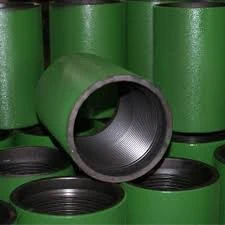- Afrikaans
- Albanian
- Amharic
- Arabic
- Armenian
- Azerbaijani
- Basque
- Belarusian
- Bengali
- Bosnian
- Bulgarian
- Catalan
- Cebuano
- Corsican
- Croatian
- Czech
- Danish
- Dutch
- English
- Esperanto
- Estonian
- Finnish
- French
- Frisian
- Galician
- Georgian
- German
- Greek
- Gujarati
- Haitian Creole
- hausa
- hawaiian
- Hebrew
- Hindi
- Miao
- Hungarian
- Icelandic
- igbo
- Indonesian
- irish
- Italian
- Japanese
- Javanese
- Kannada
- kazakh
- Khmer
- Rwandese
- Korean
- Kurdish
- Kyrgyz
- Lao
- Latin
- Latvian
- Lithuanian
- Luxembourgish
- Macedonian
- Malgashi
- Malay
- Malayalam
- Maltese
- Maori
- Marathi
- Mongolian
- Myanmar
- Nepali
- Norwegian
- Norwegian
- Occitan
- Pashto
- Persian
- Polish
- Portuguese
- Punjabi
- Romanian
- Russian
- Samoan
- Scottish Gaelic
- Serbian
- Sesotho
- Shona
- Sindhi
- Sinhala
- Slovak
- Slovenian
- Somali
- Spanish
- Sundanese
- Swahili
- Swedish
- Tagalog
- Tajik
- Tamil
- Tatar
- Telugu
- Thai
- Turkish
- Turkmen
- Ukrainian
- Urdu
- Uighur
- Uzbek
- Vietnamese
- Welsh
- Bantu
- Yiddish
- Yoruba
- Zulu
Tubing and Casing Solutions for Oil and Gas Industry
Understanding Tubing and Casing in the Oil and Gas Industry
In the oil and gas industry, tubing and casing play crucial roles in the extraction process, ensuring that operations are safe, efficient, and environmentally sound. These two elements are essential components of a well, serving different yet complementary functions that contribute to the successful production of hydrocarbons.
Casing The Structural Backbone
Casing refers to the series of steel pipes that are inserted into the wellbore after drilling has taken place. Its primary purpose is to stabilize the well and maintain its integrity throughout the production cycle. Casing helps prevent the collapse of the wellbore, protects the surrounding formations, and isolates the hydrocarbon zones from other geological layers. Additionally, it provides a conduit for the extraction of oil and gas while safeguarding groundwater resources by preventing fluid migration.
The casing is typically installed in stages, with each section being cemented in place to create a robust barrier. Various types of casing are used, including surface casing, intermediate casing, and production casing, each designed for different depths and purposes. For example, surface casing is installed at shallower depths to protect freshwater aquifers, whereas production casing is used to directly transport hydrocarbons from the reservoir to the surface.
Tubing The Production Line
Once casing is in place, tubing is introduced into the well to facilitate the actual extraction of oil and gas. Tubing is a smaller diameter pipe that runs through the casing and directly connects the production formation to the surface facilities. Its primary function is to allow hydrocarbons to flow efficiently to the surface while also enabling the injection of fluids if enhanced recovery methods are applied.
tubing and casing

The design and material of tubing are critical, as they must withstand varying pressures, temperatures, and corrosive environments associated with oil and gas production. To enhance efficiency, tubing may also be designed to accommodate various production techniques, such as artificial lift systems. This adaptability ensures that operators can respond to changes in reservoir conditions and maintain optimal production rates.
Interplay Between Tubing and Casing
The relationship between casing and tubing is vital for the overall success of hydrocarbon extraction. Casing provides the necessary structural support and protection, while tubing facilitates the movement of the produced fluids. In a well-optimized system, both components work together seamlessly, allowing for safe and efficient production.
Moreover, advancements in technology have led to improved materials and techniques for both casing and tubing, enhancing their performance and lifespan. Innovations such as non-corrosive alloys and improved cementing techniques have become standard practice, reducing the risk of failure and ensuring more sustainable operations.
Conclusion
In summary, tubing and casing are indispensable elements of the oil and gas production process. Casing serves as the foundational support that ensures the well's integrity, while tubing is the conduit for the hydrocarbons. Together, they enable operators to extract valuable resources safely and efficiently. Continuous improvement in technology and practices surrounding these components will remain essential as the industry evolves to meet the growing demand for energy while minimizing environmental impacts. Understanding the intricacies of tubing and casing not only sheds light on the technical aspects of drilling but also highlights the importance of responsible resource management in today's world.
-
Tubing Pup Joints: Essential Components for Oil and Gas OperationsNewsJul.10,2025
-
Pup Joints: Essential Components for Reliable Drilling OperationsNewsJul.10,2025
-
Pipe Couplings: Connecting Your World EfficientlyNewsJul.10,2025
-
Mastering Oilfield Operations with Quality Tubing and CasingNewsJul.10,2025
-
High-Quality Casing Couplings for Every NeedNewsJul.10,2025
-
Boost Your Drilling Efficiency with Premium Crossover Tools & Seating NipplesNewsJul.10,2025







